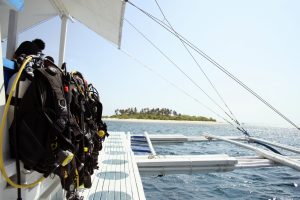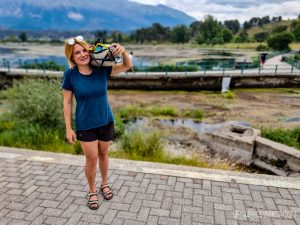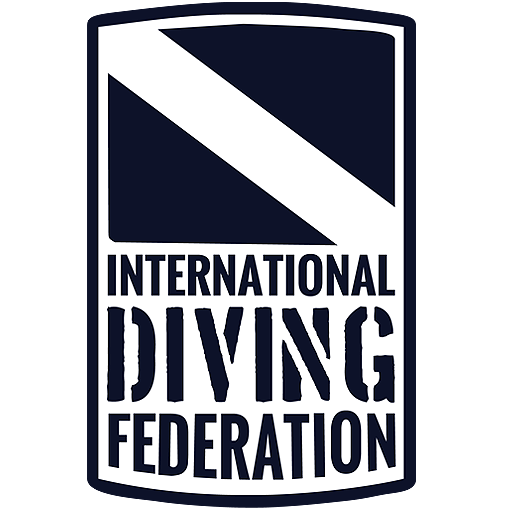Safety is the holy grail in diving. After all, we enter different environment to which we are not evolutionarily adapted, and we intend to stay there far longer than our body’s capabilities would allow. We can make a dive today that lasts several hours and then come to the surface safe and sound. The search for the best possible methods to ensure safety began at the same time that people started going underwater and looking for ways to stay there as long as possible.

Where do the vast majority of diving accidents come from? Exactly like most mistakes made in all other areas of life, the most common reason is so-called human error. But what is hidden under such capacious term? Are we able to make the human factor, usually the weakest link in the security chain, more resilient? Any such attempts and actions are, of course, praiseworthy. However, experience shows that the mere proliferation of procedures, security standards, orders and prohibitions does not have the desired effect at all. This is because that human factor we mentioned comes into play, we are able to explain and rationalize bending or even breaking of rules.
One of the problems we have to deal with here is the belief in our competence and perfect memory. These apply to basically everyone, regardless of the level of competence, experience and professionalism achieved. Meanwhile, studies conducted in hospitals or aviation show that even the best and most competent specialists in their fields make mistakes. How can we minimize such risks?
One method is to use checklists. In diving, they appear most often in the context of rebreather dives, although we could use them at all other types of diving. Procedures, checklists and standards work very well in increasing safety margins, but on one condition only – when we use and follow them.
Checklists allow operators in the dive business to control all the most critical aspects of diving. They also give us confidence that each of the key points has been done, checked and discussed. Many companies, especially larger and better organized ones, are choosing to adapt and use checklists.

I have had the opportunity to work in dive centers where various checklists were used. One was a huge company that had 7 safari boats used for multi-day diving trips. Each time we boarded, the crew divided up the duties – some of us helped distribute the cabins among the customers, while others used a checklist to check the boat’s readiness to leave port and set sail. This included checking that there were enough life jackets in the cabins, that the lifeboat was secured and ready for use, that there were was enought oxygen in emergency tank, and so on. By ticking off all the following points, we were able to complete the check flawlessly and very quickly. As a result, only a few minutes later we could already bounce back confident that few things could surprise us on the high seas.
At another dive center, the instructors’ duties included packing crates containing diving equipment for customers. There, in turn, we used checklists that listed all the necessary items to be packed. As a result, not once during the season did we forget to pack an item. Anyone who has worked in an active dive center knows well that most of the time you work in a rush – what makes it even easier to make a mistake.

Theoretically, using such checklists has many advantages – it does not take much time, thus saving us from wondering and “reminding” ourselves what to do next. Creating it or using a checklist that already exists – is also a small effort, considering all the advantages.
How to introduce checklists into your diving routine?
A checklist, to be effective, must first of all not discourage its use in any way. Specific, clear, concise, at hand – such will be the ideal checklist to help you increase your safety during preparation for diving. As you may have guessed, your pre-dive checklist should include the most important pieces of equipment (especially those that are easy to overlook!) and such aspects that are crucial to you. There is no point in creating a multi-page list that we won’t want to use later. Studies show that such lists are more readily used and perform much better when they take no more than 2 – 3 minutes to use and when they consist of 6 – 8 points.
What might such key aspects be? For example, making sure we have the right gases set on the computer! Most of us technical divers have, more than once, entered the water without checking set (available on computer) gases, and then we were changing them angrily on the decompression step with fingers stiff with cold.

To get the most out of a checklist, it is important to follow it meticulously and tick off the next points in the order in which they appear. Contrary to what you might think, following this order can go a long way toward keeping you safe. If you use self-made checklists then the order of points will be logical for you, in the case of ready-made lists this issue may be less intuitive.
For the average recreational diver, such a list for checking equipment before diving might look like that:
- Mask and fins – is our mask prepared and protected against evaporation? Did we take our fins?
- Cylinder – is the cylinder fully open? Do the clamps hold it well? How much gas is in the cylinder?
- Regulators – taking 3 breaths from each regulator: main and backup while glancing at the pressure gauge.
- Buoyancy compensator – is the inflation hose connected, is the inflator working properly, are the buckles fastened?
- Weights – did we remember to put it on :)? (forgetting weights happened to most of us, right?!).
- Computer – is it present, turned on, does it have the right settings?
- Additional equipment: buoy, compass, spool, flashlights, ect.
Your checklists may look different, moreover, you can create several checklists tailored to different dives, circumstances, trips and situations. I strongly encourage you to create such and test how they work in practice. Share your impressions with us!
About the author:

Daria Dobrowolska has been involved with the IDF since the very beginning of the federation. She is a Staff Instructor as well as Technical Diving Instructor at the trimix and advanced wreck levels, but she is most proud of her Full Cave instructor certification. In diving, she appreciates remote cave trips and fascinating macro of tropical seas. You may know her as the author of our training manuals.
Outside of diving, she enjoys spending her free time hiking in the mountains and traveling, always with a book in her backpack.



